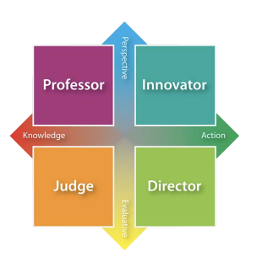The CEO of a large professional services firm called me the other day. Leadership challenges in economic uncertainty are on everyone’s minds. “I need to restructure my business,” he said. “I’m thinking of eliminating my acquisitions team.”
Like many of the CEOs I coach, he was anxious about the current economic uncertainty and had a hard time thinking beyond the pressing question of the moment: “How do I cut costs?” This is a key consideration in cost reduction strategies for leaders.
The complexity of today’s environment is clearly overwhelming many leaders who haven’t adjusted to strategic leadership in uncertain times. Instead, they’re habituated to asking the same types of questions over and over again—’since revenues are dropping, how do we reduce unnecessary costs?’—and they find it difficult to reframe the present situation through a new lens.
As I probed deeper into my client’s context, I asked, “What’s another way to do acquisitions given the current environment?”
He paused for a moment and then said, “Oh, we could buy at the bottom—we can take over debt from people who don’t want to keep working for another ten years.”
And just like that, the direction of our conversation shifted, and my client began excitedly discussing new possibilities. The right question made all the difference.
How do we look at a situation from a new perspective and ask different questions? It doesn’t come naturally to most of us. Even outside of a crisis, most people only use about 25% of the questions available to them. We get stuck in a mental mold. Before we talk about how to break out of it and tap into the other 75%, let’s start with the basics: As a leader, are you even asking enough questions?
Why Great Leaders Ask More Than They Answer
The paradox of leadership is that the reasons why people get promoted into leadership roles are different from the reasons that they succeed as leaders. People get promoted for having good answers. But once they take the helm, what distinguishes good from bad leaders is not whether they have the answers, but how often they ask questions. In fact, I would go so far as to say that there is never a situation in which leaders shouldn’t ask questions.
Ineffective leaders assume they know the answers. They bulldoze their plans through, and others, who weren’t consulted, wind up resisting them—no surprise there. Successful leaders spend 70 to 80 percent of their time asking questions, not answering them. This approach fosters engagement strategies for leaders and cultivates widespread accountability.
From Giving Answers to Asking Them
This was my conclusion after I conducted around 170 formal and informal interviews with world-renowned leaders—from Walter Isaacson, the former head of CNN, to four-star U.S. General Jack Chain, who was responsible for the country’s nuclear arsenals, to Jack Welch, former CEO of G.E. When Chain’s 10-year-old daughter asked him what he did when he served as a staff officer in the Pentagon, he said, “I answer questions.” When, after he was made commander, she asked how his new role would be different, he responded, “Now I ask the questions.”
And although Welch has been tagged as a “hard-nosed” leader, those close to him speak of Welch’s “insatiable curiosity” and his trademark of asking more questions than anyone else in the room.
Good leaders are able to relinquish their egos and give others the chance to flourish—that was the premise of my book, Just Ask Leadership, in 2015. Since then, I’ve expanded upon that conclusion. Yes, what distinguishes bad leaders from good ones is how frequently they ask questions, but what distinguishes good leaders from truly great ones is the ability to ask different types of questions and to help others do so as well.
Types of Questions Great Leaders Ask
If you’re hoping for a formula that spells out, ‘All great leaders ask this question…’—you might be a bit disappointed with this article. It’s far more effective for you to reflect on the kinds of questions you’re prone to asking and why that is the case. Effective leadership questions can make all the difference.
In working with others, do you tend to…
- Try new ways of taking action immediately and ask, “Where should we go from here? How can we do it better?” (Innovator)
- Assess alternative methods of taking action, such as, “Will this help us reach our goal? What will we measure?” (Director)
- Gather information to evaluate a situation, such as, “Is this in alignment with our values, strategy, and goals?” (Judge)
- Explore new ideas to frame a situation, such as, “What should be our goal? How else could we think about this?” (Professor)

The Four Leadership Styles: A Map for Better Questions
Each leadership style maps onto two axes: Perspective to Evaluative, and Knowledge to Action. This model comes from CO2 Coaching. We built and tested it with hundreds of leaders and HR professionals to ensure it’s psychographically valid. This is because we believe leadership questions are the answer.
We call this model PEAK Leadership.
No single leadership style is best. Some work better in certain situations—like the Professor style for strategy or the Innovator style for sparking action. The key is to expand your team’s range. Draw from all four styles so you’re not stuck in just one or two.
How to Use the PEAK Model in Real Decisions
Let’s say you’re facing a big decision or challenge. To ensure you’re covering your bases, try going in a ‘Z’ pattern across the grid:
- Start by asking Professor-style questions (‘Who else do we need to talk to?’) in the top-left quadrant to broaden thinking and get divergent opinions to form a perspective.
- Once you have an informed perspective, move across to the top-right quadrant, Innovator (‘What’s stopping us from taking action, and how can we overcome that?’), to translate ideas into actionable steps.
- Before you get going, cross diagonally toward Judge to carefully evaluate and refine the plan (‘What is the best option out of everything?’).
- Finally, move into action by thinking as a Director (‘Whose decision is it?’).
This decision-making framework for leaders helps ensure you are not locked into just one style of leadership.
The client I mentioned earlier was stuck in Director mode—focused on evaluating options and taking swift action, mainly by cutting costs. His perspective changed only when he shifted into Professor mode, which emphasizes perspective and knowledge. He stepped back to consider broader, more divergent views and asked, “Given the changing environment, is there a different way of doing acquisitions?” That question helped him uncover the opportunity within the challenge.
Questions Leaders Should Ask to Overcome Challenges
If you find your team or yourself bogged down in a discussion over a decision, here are three questions to ask to get unstuck:
1. Are All Our “Different” Questions the Same?
Questions that sound stylistically dissimilar can, at their core, be the same type of question.
Towards the end of a multi-day strategic planning session for our leadership team last year, our facilitator asked, “Can we really do all of this?” The question was well-taken, as people had voiced feeling overwhelmed by the plans. Still, people were reluctant to jettison any of the ideas they had laboriously crafted over the past few days. The facilitator interjected again at a later point, “Isn’t this a lot? How can we accomplish this?”
People tried to answer the question, but soon the conversation drifted back. The energy in the room started to feel sluggish and heavy. I saw what the facilitator was trying to do, so I jumped in. I asked, “What is the biggest challenge we will face in getting this done?” But that didn’t shift the conversation. The real breakthrough came when someone asked, “How would things change if this were a two-year plan instead of one?”
The question sliced through the building tension like a hot knife through butter. Everyone exhaled, and we decided to recalibrate the plan for an expanded timeline.
Why One Good Question Can Shift the Whole Conversation
Although the facilitator and I thought we were asking different questions, we were ultimately asking questions from the same quadrant: Judge (Evaluate + Knowledge). We were evaluating “how labor-intensive” or “how difficult” our strategy was. It was only when we shifted the parameters of our discussion to view our plans in an alternative lens (Innovator) that we were able to finally dissolve the tension in the room.
2. What Questions Are Not Being Asked?
Draw the axes and quadrants.
I draw out the quadrants for myself all the time. When I’m pondering a decision with a team or by myself, I take out a notepad, sketch the four quadrants, and ask, “Where would the questions we are asking fall in this map? What quadrants are we missing?” Seeing the graph forces me to think through, “What would this style ask in this scenario? How about that style?” and helps me realize what angles have been missing.
This approach paid off for a leader at a software consulting company. She was leading a junior teammate on a months-long project. Part of her role was to help him improve how he showed up on stakeholder calls. But no matter how often she pointed out his over-confidence or urged him to ask more questions, nothing changed. His behavior showed her message wasn’t getting through.
She did a role-play with other leaders, asking questions from all four quadrants. Afterward, she realized she had only used the Judge style with her teammate. For example, asking, “How did you think you did on that call?” Did your approach work?”).
“If I’m really going to serve this person as a leader, I need to ask questions that will expand his perspective, not shrink it,” she said.
Moving Beyond Your Default Questioning Style
The easiest way for her to shift out of her dominant style was to move diagonally to the opposite quadrant—toward the Innovator style. This meant exploring more divergent ways of thinking and acting. She began by asking her teammate questions like, “How could you approach this differently to try something new?” and “What would need to change for you to become wildly successful at this?”
To take it a step further, she could even ask more directly: “It’s clear my feedback isn’t coming through—what can I do differently to help you?”
Ultimately, what was at stake wasn’t just the questions she asked. It was a fundamental shift in how she understood leadership. Instead of evaluating performance like a judge, she was learning to lead by helping others discover new opportunities for growth and innovation.
3. Does My Team Each Have Unique Dominant Styles?
Yes, you can train yourself to expand your repertoire for questions, but the fastest way to work past your blind spots is to collaborate with someone who has a different set of blind spots.
Notice your dominant styles. Then seek out people who think differently. Invite them to ask questions you wouldn’t think to ask. As a leader, don’t just build a diverse team—create a space where every voice feels safe to speak.
People may not feel comfortable “derailing” the conversation onto a different set of tracks than the ones you’ve laid, which is why it is incumbent upon the leader to proactively encourage people to do so. Be explicit and ask: “What is a different question we could be asking? What am I missing?”
Empowering Others Starts with the Right Questions
The goal of asking different types of questions isn’t just to make better decisions. It’s also to support leadership growth by empowering others to decide for themselves. The best person to make a decision is the one closest to the situation. Not the one with the biggest title.
So what can leaders do to help others make decisions? Encourage different types of questions—not to sound smart, but to help people get unstuck. Questions can shift how someone sees a situation. Great leaders set their ego aside and use questions to give power to others. That’s what sets them apart.
At CO2 Coaching, we specialize in helping leaders unlock the questions that drive transformation. Our approach isn’t one-size-fits-all; it’s built on a deep understanding of your unique challenges. Let us help you—and your team—reach your next peak.
Are you ready to elevate your leadership? Schedule a complimentary consultation today, and let’s explore the questions that will unlock your organization’s full potential.



